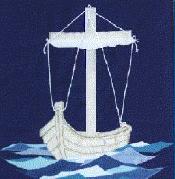
 |
St Theodore'sWattle Park |
|||
|
| ||||
| Sermon of the Week |
| |
| 18/2/07 | ||
| User's Guide to the Bible - The pattern of the Kingdom | Gen 2:4-25 |
|
|
||||
| We noted last week that when the Biblical writers deliver their accounts of the things that happened they often shape them in particular ways in order to convey some particular aspect of the truth of the situation. Now there's nothing deceitful or underhanded about this. They're simple wanting their readers to see the things that they've discovered in the events that they're recording. Often they're theological truths that we need to understand. In fact we might want to say that God has chosen these people to record these events because he wants us to see the things that they notice. | |
| So it's interesting that in the first two chapters of Genesis, the first two chapters of the Bible in fact, we have two quite different accounts of the same set of events: two accounts that no doubt arise from 2 different viewpoints. The first, in chapter one, is written in the form of a poem or a song. It may well have been used as a form of hymn, used in worship to recount the way God had made the world and everything in it. If you look at it closely, you'll see that it's highly structured with a number of refrains - "And it was so;" "And God saw that it was good;" "And there was evening and there was morning, the ... day." | |
| But when we read this second account of the creation of the world, in Gen 2, we find quite a different emphasis. Here we find a description, not of the wonder of the creation, of it's perfection, not of God as the one who brings it into being through the agency of Word and Spirit, but instead the focus is on the man and woman who are the pinnacle of God's creation in the first account. Here we discover a number of important truths about how God intended us to live in his world. | |
| Here we find that God makes a man out of the dust of the ground. That is, he's made of the very stuff of the creation. His existence is integrally bound up with this world in which he's placed. | |
| Then God breathes into his nostrils the breath of life; and the man became a living being. So right from the start we discover something important about humanity. First we're an integral part of creation. That's why scientist have found so many similarities in the DNA structure of human beings and other creatures and that shouldn't surprise us. But then, more importantly, we're utterly dependent on God for our life, for our existence. It's the breath of God that brings life to the man. I guess this is a parallel concept to the expression in chapter 1 that men and women are created in the image of God. God breathing the breath of life into the man carries the idea of him imparting something of his own life to the man. | |
| But then the story continues and we find three more critically important truths about how God intended us to live in his world. Having made the man, the earth is now ready to be populated. First God plants a garden for the man to live in. The garden is full of trees that are both pleasant to look at, but also good for food. There are two special trees: the tree of life and the tree of the knowledge of good and evil. We'll come to them later. And there's a river flowing out of Eden, that first waters the garden, then branches out to form four great rivers. At this point we discover that this story is rooted, not just in time but in place. There's a time and place historical context to this creation account. The time is at the beginning of human history, however long ago that was, but the place is clearly anchored to the geographical region to the east of Canaan. Now this is important, because one of the things we're going to notice as we go along in this series is that at almost every point in the developing story, in the Old Testament at least, we find the blessing that God promises being located in a place. In this case the place where God's blessing is found is the garden of Eden. | |
| But then we come to the first of the three important truths I mentioned; truths about how God intended us to live in his world. | |
| Having planted the garden and placed the man in it, he then gives him a task. He's to till it and keep it. Now, again, this is a parallel statement to that at the end of chapter 1 where humans are told to fill the earth and subdue it, and to rule over the rest of animal life. Here he's to till the earth and keep it. He's made the steward of God's creation. Here the meaning of subdue the earth is made a bit clearer. He isn't meant to subdue it in the sense of being a tyrant, merely exploiting it for his own gain. Rather he's to keep it under control, to manage it like a good steward of a valuable resource. He's to maintain a relationship with the earth that's at the same time that of the master, but also the benevolent carer. | |
| We see something of the importance of this in Australia at the moment. Our farmers have a difficult task before them. They need to tame the land in order to produce crops and livestock so we can eat, but at the same time they need to conserve and sustain the land and especially their water resources so the land can continue to produce in abundance. If all we're doing is subduing the earth we'll end up with a disaster like the sort of thing that seems to be happening in the Amazon at the moment. | |
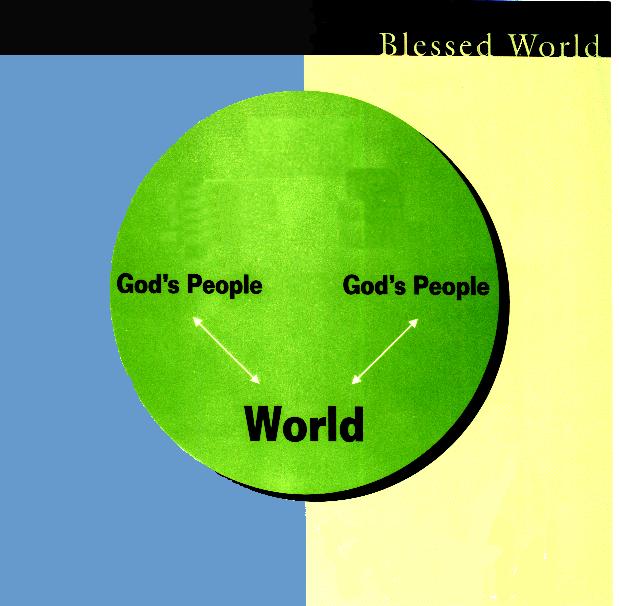 So the first truth about how God wants us to live in his world is that we need to have a relationship of care of the earth. We're put here to look after the earth, to manage its resources, to ensure its long term health and productivity. We're to be God's people in God's place caring for his creation. So the first truth about how God wants us to live in his world is that we need to have a relationship of care of the earth. We're put here to look after the earth, to manage its resources, to ensure its long term health and productivity. We're to be God's people in God's place caring for his creation. |
|
| I'm not sure how many of the environmentalist movement are Christians, but if you think about it there should be a fair percentage of us shouldn't there? Aren't Christians the ones who have the greatest motivation for caring for the earth, since we understand that that's what God intended humanity to do? We're hoping to take part in Clean Up Australia Day in a couple of weeks as part of our service in Wattle Park because we think we should be involved with the rest of the community in caring for our environment. | |
| But then we read that there's one proviso to this task of tending the garden. In the middle of the garden are two trees. One of them, the tree of life, is there for them to enjoy, to ensure that they live in God's place, under God's blessing forever. But the second tree is there to help them understand, or remember, that they're there only because God has made them. He's God and they're his creatures. So they have to obey him. He tells the man "You may freely eat of every tree of the garden; 17but of the tree of the knowledge of good and evil you shall not eat, for in the day that you eat of it you shall die." Was there something dangerous about this fruit? Was it poisonous? Well, no. Not exactly. As we'll see next week, they were able to eat it without any fear of immediate death. The devil was telling a half truth when he said they wouldn't die if they ate it. | |
| But on the other hand, it was extremely dangerous wasn't it? Why? Because to eat that fruit was to disobey God. It was to refuse to accept his rule in their lives. It was to fail to trust God to know what was best for them, what was right or wrong. This can be a hard thing to do can't it? To accept that maybe God knows more than us about how the world works, or what might make us happy; to trust him to look after us when things get tough. But that's the situation that the man found himself in. As long as he obeyed God, as long as he trusted him enough to do as he said, to leave that fruit alone, he'd continue to enjoy the blessings of living in the garden forever. That's the nature of faith at this stage of the biblical story. Adam would live forever as long as he continued to have faith in God. | |
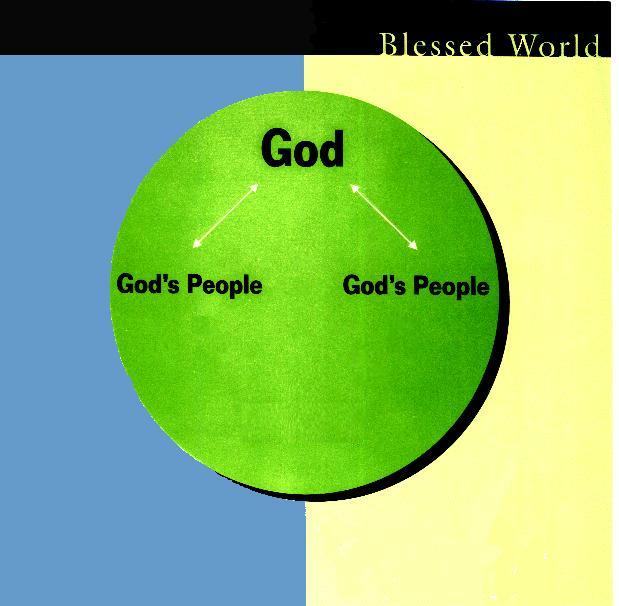 So here's the second thing that we need to understand: we need to have a right relationship with God as the one who deserves our obedience and trust. We're to be God's people in God's place, living in obedience to God's commands. So here's the second thing that we need to understand: we need to have a right relationship with God as the one who deserves our obedience and trust. We're to be God's people in God's place, living in obedience to God's commands. |
|
| But then God says "It is not good that the man should be alone; I will make him a helper as his partner." God knows that central to his creation of the man in his own image is the need to relate to others as equals. So he begins the task of creating a partner for him. He forms every type of animal and bird and brings them to the man who names them. But the very act of naming the creatures betrays the fact that none of them are his equal. Just as he has dominion over the plants and the trees so he has dominion over all these animals. Even the more intelligent of the animals isn't suitable to be called a partner to the man. | |
| So God puts the man into a coma, takes one of his ribs - these days we'd say he took some of his DNA - and, using the rib, forms a woman, a complementary being, someone who is in every way his equal. He says "This at last is bone of my bones and flesh of my flesh; this one shall be called Woman, for out of Man this one was taken." By the way He isn't naming the woman at this point. Woman is simply the female form of the word man. It's like talking about a priest and a priestess: it's purely a distinction of gender. Significantly, it isn't until after the fall that Adam names his wife Eve as a sign, perhaps, of the curse that God declares, of the fact that he's now going to rule over her. | |
| But that's getting ahead of ourselves. Here we find the man and the woman living together in total harmony, and we're told that this is the model that still stands, even in the fallen world: "24Therefore a man leaves his father and his mother and clings to his wife, and they become one flesh." The sign of the harmony and innocence in which they lived is this: "25And the man and his wife were both naked, and were not ashamed." You see, there's no sin to pollute their relationship, their minds, their desires. They can enjoy their relationship with one another without needing to hold back, to hide, to cover up their faults, because they have no faults. | |
| Anyone who's married will recognise this picture. It's the thing you dream about, isn't it? It's the thing you wait for: that moment when you and your spouse are in total harmony with each other. It does happen on rare occasions (or so I've been told); when there's nothing pushing you apart; no grudges, no stored up offences, nothing that might be brought up in accusation; when there's no embarrassment at your many and varied failings because you feel totally accepted by them. It may be only a dream most of the time, but for the man and the woman in this moment this was the reality in which they found themselves. | |
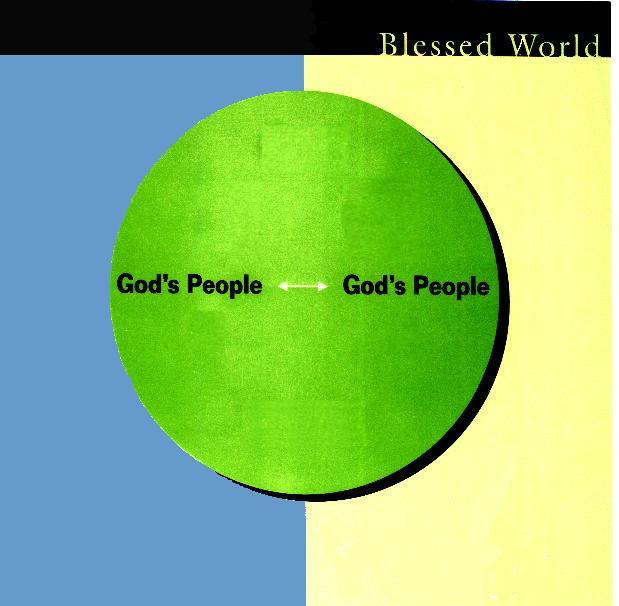 This is the third thing we need to understand about how God's wants his people to live: we need to have a right relationship with one another, a relationship of mutual love, care and respect. We're to be God's people in God's place, living in harmony with one another. This is the third thing we need to understand about how God's wants his people to live: we need to have a right relationship with one another, a relationship of mutual love, care and respect. We're to be God's people in God's place, living in harmony with one another. |
|
| So when we put all that together here's the diagram we get that illustrates God's blessed world the way he meant it to be. | |
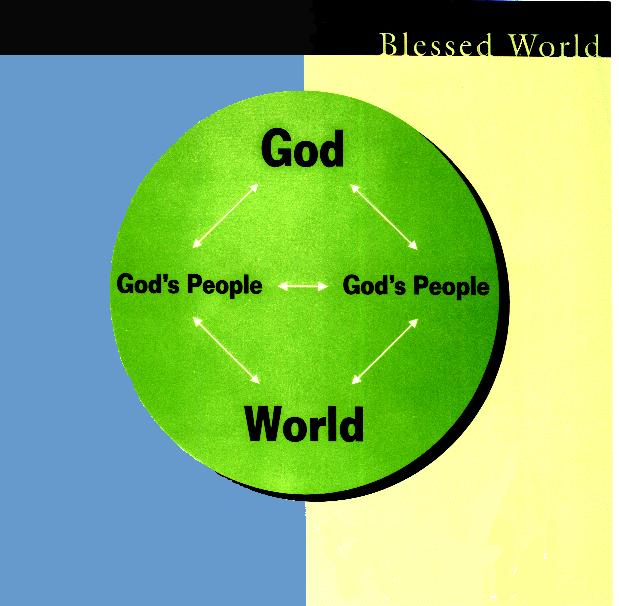 Here we have God's people in God's place, the place of his blessing - what I've called the Blessed World, living in obedience to God's commands, in harmony with one another and caring for God's creation as good stewards of all that God has provided. That's as good a description of paradise as you could hope to find. Here we have God's people in God's place, the place of his blessing - what I've called the Blessed World, living in obedience to God's commands, in harmony with one another and caring for God's creation as good stewards of all that God has provided. That's as good a description of paradise as you could hope to find. |
|
| Well that's where we're going to leave it for now. Next week we'll see how this ideal world was spoilt, broken apart, in fact, by the failure of the man and woman to obey God. | |
Handout |
|
| The User's Guide to the Bible | |
| The Pattern of the Kingdom | |
| Background Information | |
| In Genesis 1-2 we see a picture of the world as God originally intended it to be. | |
| Chapter 1 tells us about creation from God's point of view: | |
| 1. God is the Author of Creation | |
| · He spoke the word and the universe came to be into existence "ex nihilo" – out of nothing. | |
| · How God created the world – in seven 24 hour days or gradually over time – is not as important as that he created it. Its origin is in God and not from any other source or being. | |
| · Note the involvement of all the persons of the Trinity in the Creation. God the Father who took the initiative (Gen 1:3 - "Then God said"), God the Holy Spirit whose breath swept over the waters (Gen 1:2), and God the Son, God's Word (John 1:1) who was the agent of the act of Creation itself (John 1:3 - "Through Him all things were made"). | |
| Chapter 2 tells us about creation from humanity's point of view. | |
| 2. Humanity is made for relationships | |
| · God made human beings and placed them in a place where they could enjoy his blessing forever. | |
| · Genesis 2 paints a picture of a series of perfect relationships that God intended for us in his original creation: | |
| · Humanity with Creation: God gave humanity responsibility for tending the garden – (Gen 2:15 – "till the garden and keep it") i.e. for caring for the environment. The man's naming of all the animals and birds is a sign of his dominion over the world of nature. This dominion derives from the fact that human beings are made by God in His own image (Gen 1:27). | |
| · God with Humanity – Humans were made to be like God and to be in an obedient relationship with Him. God set limits to our behaviour in the form of the prohibition on eating of the fruit of the tree of the knowledge of good and evil. | |
| · Man with Woman – both are given to complement the other and they share intimacy without fear or guilt (Gen 2:25 -"naked yet not ashamed"). | |
| Questions for Small Group Discussion | |
| 1. Read Genesis 1:1-25. What are the repeated words and phrases? |
|
| 2. What do they tell us about (a) how God made the world, (b) what God made and (c) God Himself? |
|
| 3. Read Genesis 1:26-31. What might being made in God's image mean especially in terms of our rule and relationships? |
|
| 4. Read Genesis 2:4-25. What differences are there in the way creation is described here compared with Gen 1.Why is this description so different? |
|
| 5. Prince Charles once said about Gen 1:28: "It is a licence to exploit the environment. It has contributed to a feeling that the world is entirely man's to dispose of – as income, rather than as a capital asset which needs husbanding". How would you respond to him in the light of Gen 2? |
|
| 6. What is the significance of the rule about eating the fruit of the knowledge of good and evil? What does this tell us about our relationship with God? |
|
| 7. What patterns for human relationships are found in these verses? Men with women? Men and women with God? Men and Women and the creation itself? |
|
| 8. Take a quick look at Revelation 22:1-5. How is the new creation God has planned for us similar to the Garden of Eden? |
|
|
|
|
|
|
|
 |
 |
|
| ||||
Contact us |
Check our Mission Statement |
Our Mission Strategy |
Our 5-Year Plan |
Preaching Program |
Home |
Last Week's Sermon |
Next Sermon in the series |
Index of Sermons |
Receive each week's |